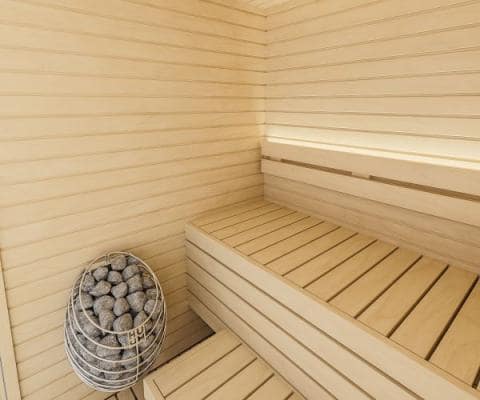Not known Facts About Traditional Sauna
Not known Facts About Traditional Sauna
Blog Article
A Biased View of Traditional Sauna
Table of ContentsThe 15-Second Trick For Traditional SaunaTraditional Sauna for DummiesThe Only Guide to Traditional SaunaTraditional Sauna for DummiesAll About Traditional Sauna
A lot of the weight lost in a sauna is water loss and is re-gained upon rehydrating. Without a doubt sauna can be an important part of a healthy weight loss program. To take a look at the differences between traditional and IR saunas, I will divide these right into proven, theoretical, and produced distinctions.Therefore, the hottest point in the saunawhich goes to the ceiling straight above the sauna heateris normally between 185 and 190 F. Claims that a standard sauna goes beyond 200 F is merely not real and not suitable for electrical saunas offered in the US. The temperature for a far-infrared sauna is usually set in between 120 and 140 F; nevertheless, unlike the standard sauna, the goal in and IR room is not to attain a heat.

When a conventional sauna has actually been correctly heated, the sauna walls are cozy, the air temperature has actually accomplished established temperature and the rocks are incredibly heated. As a fascinating side note, the warmed wall surfaces and the rocks are discharging far-infrared warm, combined with the warmed air, to create an "covering warmth".
How Traditional Sauna can Save You Time, Stress, and Money.
When the heat is accomplished, the aspects cycle on and off to keep the heat. Many typical sauna users delight in putting water over the rocks to develop vapor to raise sauna humidity levels. The benefits of pouring water over the rocks consist of: making the area extra comfortable, moistening the nasal passages, and enabling the usage of aromatherapy by blending crucial oils with the water.

When the energy enters the body, it causes the body temperature to raise and inevitably causes sweat. In an infrared sauna it is essential for the emitters/heaters to stay on nearly continuously. Because there is no mass of rocks to keep heat, the sauna will certainly cool down if the emitters turned off.
What Does Traditional Sauna Do?
As discussed over, the sauna bather in an infrared space intends to place himself in front of running emitters to get maximum take advantage of the heat. The home heating time for the two spaces can be extremely various, depending upon how the areas are used. For a traditional sauna, a bather must allow 30-40 mins for the room to attain a preferred temperature level and to correctly pre-heat the rocks.

A well built sauna will commonly achieve a temperature of 150-160 F in regarding 30-40 minutes. For hotter temperature levels, the area might require to warmth for a longer duration.
To some, 15 mins was "wasted" while the infrared energy heated the wood panels instead of heating a body, while others discover a pre-heated room to be much more comfortable and believe an elevated starting temperature is necessary to begin sweating. The size of recommended use for every room is about the same (10-15 mins per session); nonetheless, as a result of the reduced air temperature levels and the capacity to really feel the impacts of infrared warm quicker than a standard sauna, it is not uncommon for a person to spend a total amount of 20-30 mins in an like it infrared sauna.
Not known Facts About Traditional Sauna

The average expense per kWH of electricity in the U.S. is about $0.11, so a 4.5 kW heater will set you back about $.50 to run for one hour, if the heating unit runs constantly for one hour. Generally a sauna heating unit will certainly compete 75% of the first hour and 50% of subsequent hours on considering that the components cycle once the established temperature is find achieved.
A two person far-infrared space is generally literally smaller than a conventional sauna, commonly concerning 4' x 4' or go right here smaller sized. The IR furnace is normally 1.5-1.7 kW making use of a 120 volt 15 amp plug-in service. Because the space can be utilized faster than a sauna space, we will certainly think the area is made use of for to of an hour consisting of warm up time.
There is a hardly ever discussed difference in the social experience in between the 2 areas. While our society has actually lost several of the social advantage of the standard sauna experience, it can be very socially gratifying (Traditional Sauna). From family members time in the sauna, to heart-felt discussions with substantial others, to sauna partiesthe traditional sauna experience can lead to intimate mingling
3 Easy Facts About Traditional Sauna Explained
Most greater end infrared rooms consist of colored light therapy, sound systems and full-glass fronts.
Report this page